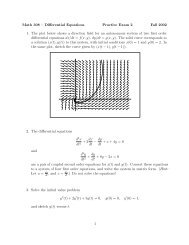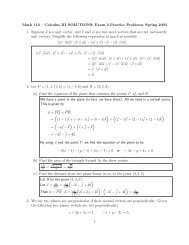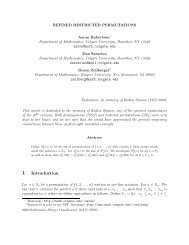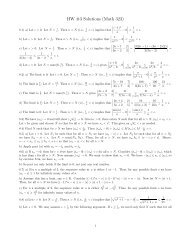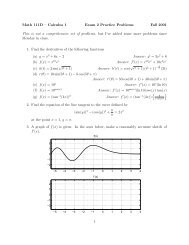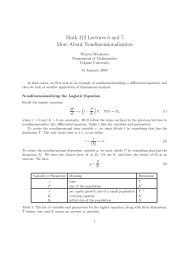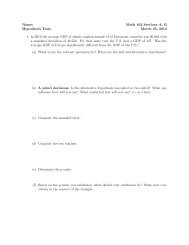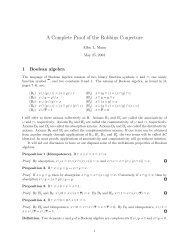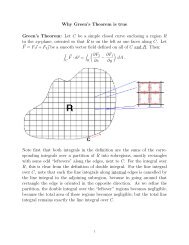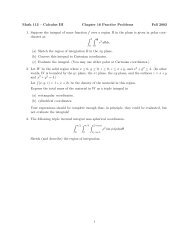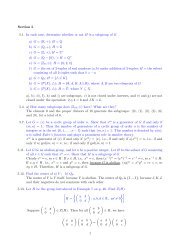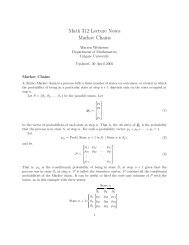Chapter 7: The Riemann Integral When the derivative is introduced ...
Chapter 7: The Riemann Integral When the derivative is introduced ...
Chapter 7: The Riemann Integral When the derivative is introduced ...
Create successful ePaper yourself
Turn your PDF publications into a flip-book with our unique Google optimized e-Paper software.
Though our text doesn’t seem to include <strong>the</strong>m, I have seen in o<strong>the</strong>r texts examples of functions<br />
defined by integrals where <strong>the</strong> upper, and maybe also <strong>the</strong> lower, limit(s) of integration are <strong>the</strong>mselves<br />
functions. In order to find <strong>the</strong>ir <strong>derivative</strong>s, we only need to throw in <strong>the</strong> Chain Rule: Suppose we<br />
are given H(x) = ∫ f(x)<br />
c<br />
g(t) dt. We can <strong>is</strong>olate an intervening function: G(u) = ∫ u<br />
c<br />
g(t) dt. <strong>The</strong>n<br />
H(x) = G(f(x)), so (d/dx)(H(x)) = G ′ (f(x)) · f ′ (x) = g(f(x))f ′ (x).<br />
Example.<br />
d<br />
dx<br />
∫ 5x 2 +3<br />
2x<br />
( ∫<br />
exp(−t 2 ) dt = d 5x 2 +3<br />
exp(−t 2 ) dt −<br />
dx 0<br />
∫ 2x<br />
0<br />
exp(−t 2 ) dt<br />
= exp(−(5x 2 + 3) 2 ) · (10x) − exp(−(2x) 2 ) · 2<br />
= 10x exp(−(5x 2 + 3) 2 ) − 2 exp(−(2x) 2 ) .<br />
)<br />
Here, <strong>the</strong> intervening function <strong>is</strong> G(u) = ∫ u<br />
0 exp(−t2 ) dt, so that G ′ (u) = exp(−u 2 ). <strong>The</strong>re <strong>is</strong><br />
nothing special about 0; because exp(−t 2 ) <strong>is</strong> continuous everywhere, any constant would have<br />
worked.<br />
[At th<strong>is</strong> point students are ready to do <strong>the</strong> thirteenth problem set.]






